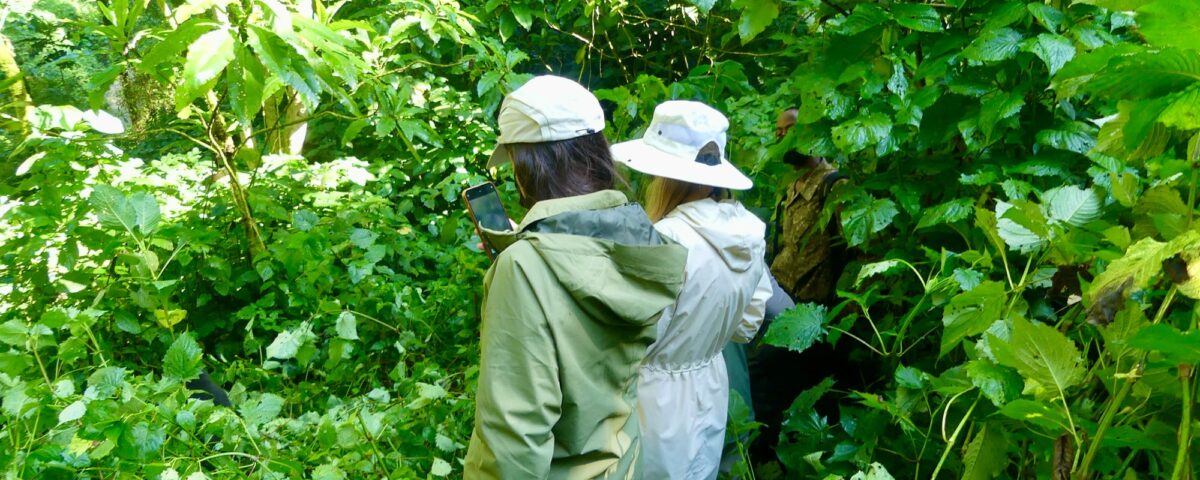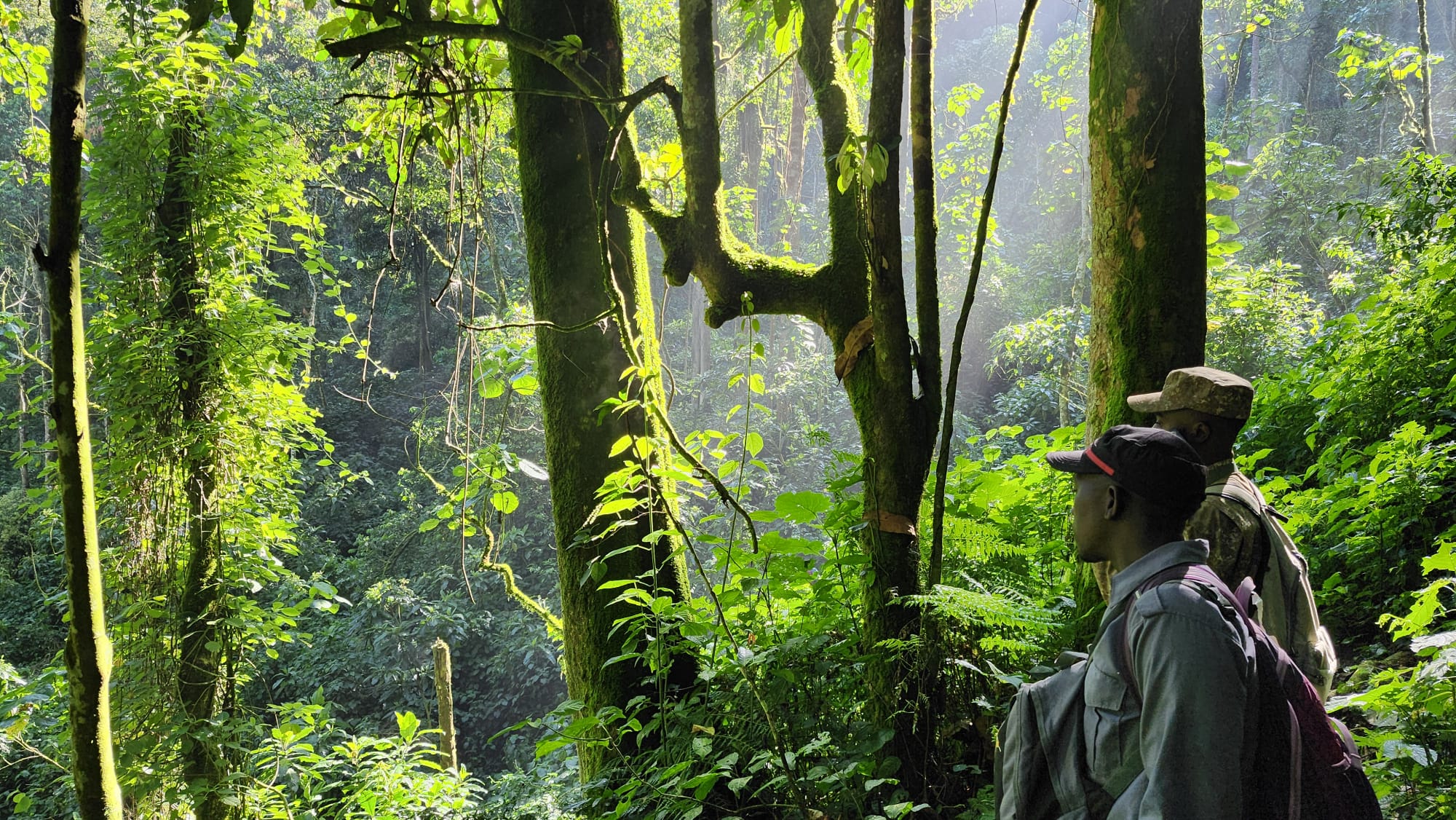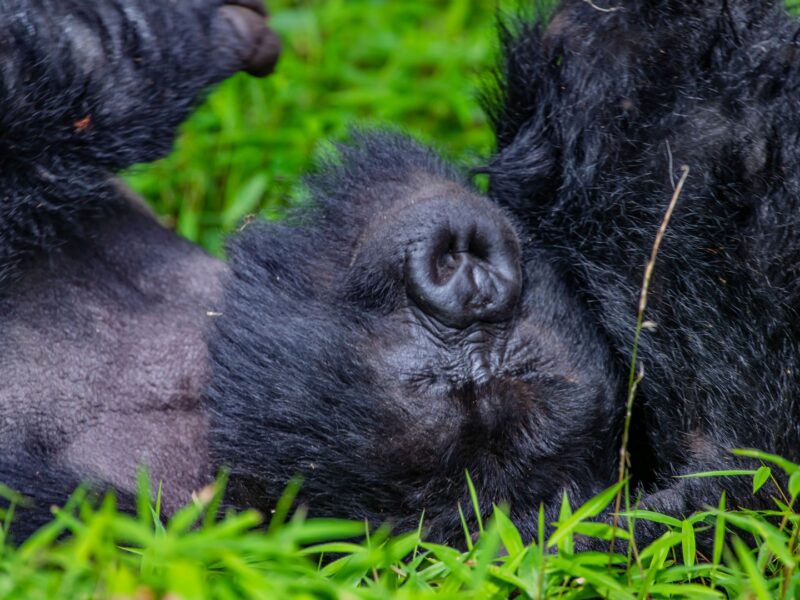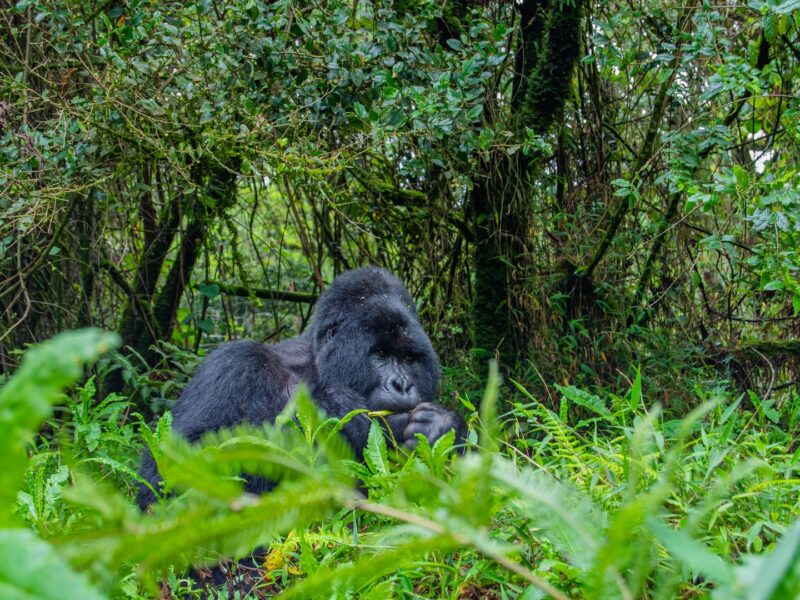
How Long Do Gorillas Live?
July 22, 2025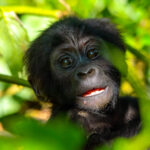
How Humans Can Help Protect Gorillas in Africa
July 23, 2025What to Do If a Gorilla Attacks: Safety Tips and Understanding Gorilla Behavior
Encountering a gorilla in the wild is a rare and awe-inspiring experience, especially during gorilla trekking in places like Uganda’s Bwindi Impenetrable Forest. These majestic primates, our close genetic relatives, are known for their intelligence, strong social bonds, and typically gentle demeanor. However, like any wild animal, a gorilla can react aggressively if it feels threatened, cornered, or provoked. While actual attacks on humans are extremely rare particularly during guided treks understanding what to do in such a situation is essential for your safety and for fostering respectful wildlife tourism.
This blog explores what happens if a gorilla attacks, how to minimize the risk, and how to respond appropriately in the unlikely event of a charge or physical contact.
Why Might a Gorilla Become Aggressive?
Gorillas are generally peaceful creatures. Mountain gorillas, especially, are known for their calm temperament compared to other great apes. Most aggression displayed by gorillas is defensive, not predatory. A gorilla might become aggressive due to several reasons. One common cause is perceived threats. Gorillas are protective of their group, particularly their infants. If they sense danger real or imagined they may try to intimidate the perceived threat. Territorial behavior is another factor. A dominant silverback is responsible for the safety of his troop and may assert his authority through bluff charges or displays of strength. Sudden movements or loud noises can also startle gorillas or be interpreted as signs of aggression. Moreover, violating a gorilla’s personal space, such as getting too close or not following your guide’s instructions, can escalate the situation.
In nearly all cases, the gorilla is trying to assert dominance or drive a person away, not inflict harm. Understanding this helps put the situation in perspective and informs how you should respond.
How Gorilla Attacks Typically Occur
When a gorilla feels threatened, its response usually follows a specific pattern. First, there is a display of strength: chest-beating, hooting, ground slapping, and mock charging. These behaviors are designed to scare off the perceived threat without resorting to actual violence.
A mock charge is a common tactic. The gorilla will sprint toward the person, stop suddenly, and then retreat or turn away. If the person runs, screams, or makes eye contact, the gorilla may interpret this as a challenge or provocation, which could escalate the situation.
In rare cases, if these displays don’t deter the perceived threat, a gorilla might make physical contact. This could involve pushing, grabbing, or even biting although such extreme responses are exceedingly rare and usually the result of major breaches in gorilla trekking protocol.
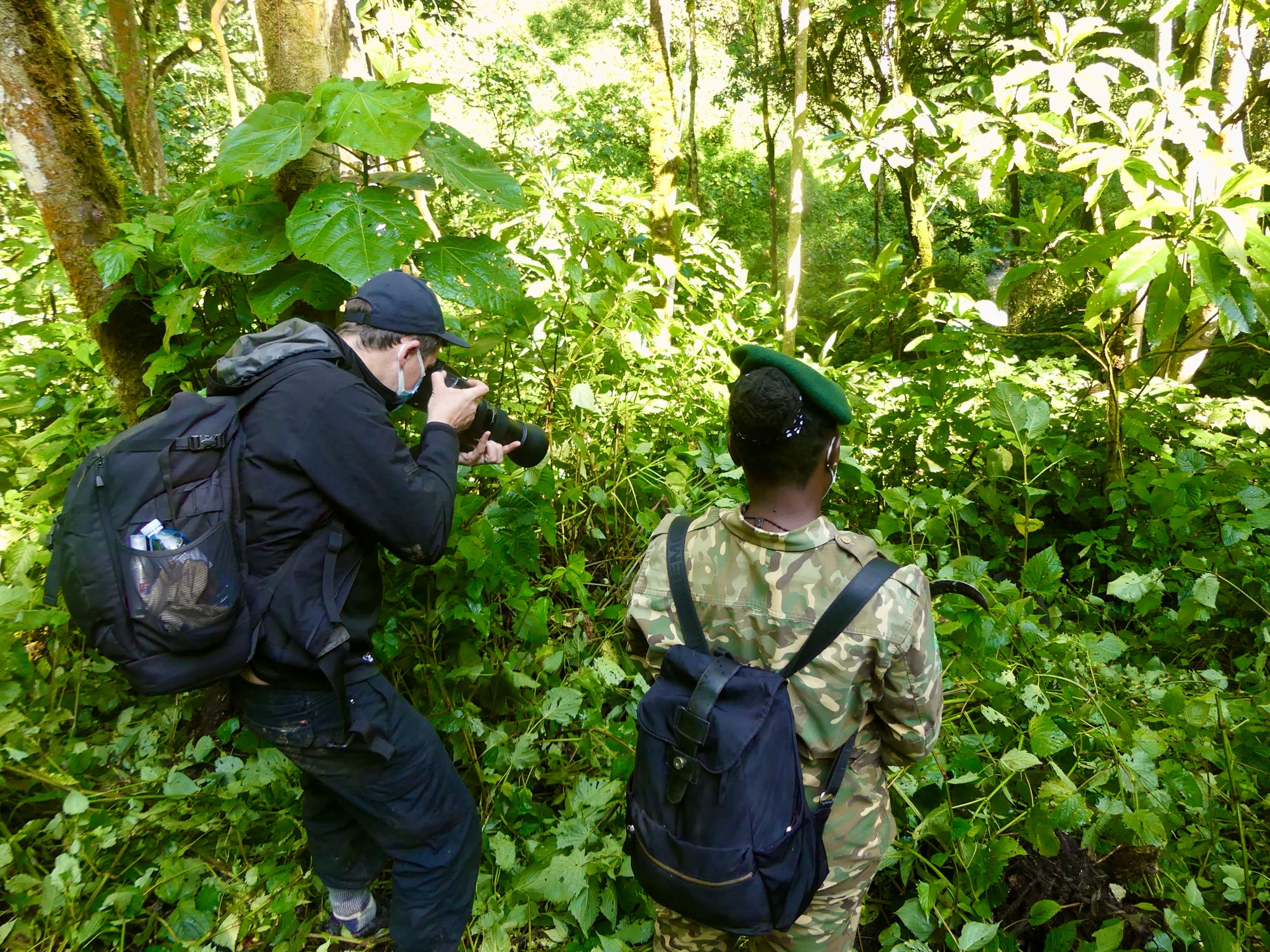
A Tourist Spotted Taking Photos of a Gorilla with a Female Ranger Guide
What to Do If a Gorilla Charges or Attacks
If a gorilla charges or makes physical contact, the most important thing is to remain calm and non-threatening. Do not run. Running can trigger a chase response. Gorillas are fast—reaching speeds of up to 20–25 mph (32–40 km/h)—and can easily outrun a human over short distances.
Avoid eye contact. Direct eye contact may be perceived as a challenge. Keep your gaze lowered to signal submission.
Crouch down slowly. Making yourself appear smaller shows that you are not a threat. Crouching or sitting calmly demonstrates submissiveness.
Be still and quiet. Sudden movements or loud noises can further agitate the gorilla. Stay as still and quiet as possible.
Back away slowly if the gorilla is not too close. Move away without turning your back.
If you are grabbed, try not to resist. Fighting back can escalate the situation. Instead, stay calm and allow the gorilla to lose interest. Some trackers recommend non-threatening actions like gently smacking your lips or mimicking grooming behavior to signal submission.
Remember, these actions are not about overpowering the animal they are about calming the situation and reducing perceived threat.
The Role of Trained Guides and Trackers
One reason actual gorilla attacks are so rare is the professionalism of guides and trackers. In Uganda, Rwanda, and the Democratic Republic of Congo, tourism authorities strictly control gorilla trekking.
Before every trek, visitors are given thorough safety briefings that explain the dos and don’ts of gorilla interaction. Group sizes are kept small to minimize disturbance, and a minimum distance of 7 meters (23 feet) is maintained between tourists and gorillas. Guides and trackers are highly trained to interpret gorilla behavior and act calmly to de-escalate any signs of tension. They are your first line of safety and play a critical role in making the trekking experience both safe and enjoyable.
Following your guide’s instructions at all times is your best defense against dangerous encounters. Guides can recognize the early signs of agitation and act quickly to de-escalate.
Myths vs. Reality: Are Gorillas Dangerous to Humans?
The media sometimes exaggerates gorilla aggression, painting them as violent or unpredictable. In truth, gorillas are among the gentlest great apes. Most gorilla encounters involve nothing more than observation and awe.
Mountain gorillas have no history of unprovoked attacks on humans during regulated tourism. Their strength is immense, but their use of it is highly controlled. Gorilla aggression is primarily a form of communication, not a predatory behavior.
Understanding gorilla behavior helps demystify their actions and encourages respectful, fear-free tourism.
Gorilla Trekking Safety in Uganda and Beyond
Uganda’s Bwindi Impenetrable Forest is one of the safest places in the world to view mountain gorillas. With established trekking routes, highly trained guides, and a deep commitment to conservation, Uganda offers both thrilling encounters and peace of mind.
To ensure your safety, book treks with licensed operators like Ngeye Tours & Travel. Attend all pre-trek briefings, follow instructions precisely, stay within permitted areas and time limits, and respect the animals and their space.
Responsible trekking is essential for both visitor safety and the continued well-being of these endangered animals.
Respect and Caution Go Hand-in-Hand
Though the idea of a gorilla attack might sound frightening, the reality is that such incidents are almost non-existent when proper guidelines are followed. Mountain gorillas are peaceful, intelligent, and mostly uninterested in human drama unless provoked.
By understanding gorilla behavior, following expert guidance, and maintaining calm in unexpected situations, tourists can enjoy unforgettable gorilla encounters in places like Bwindi Impenetrable Forest without fear.
So if you’re preparing for a Uganda gorilla safari, rest assured: safety measures are in place, and gorillas would much rather mind their own business than bother with yours especially if you respect their rules.
In the end, protecting these magnificent animals and learning how to coexist peacefully is not just about safety it’s about building a deeper connection with nature and committing to the principles of gorilla conservation and sustainable tourism in Africa.


